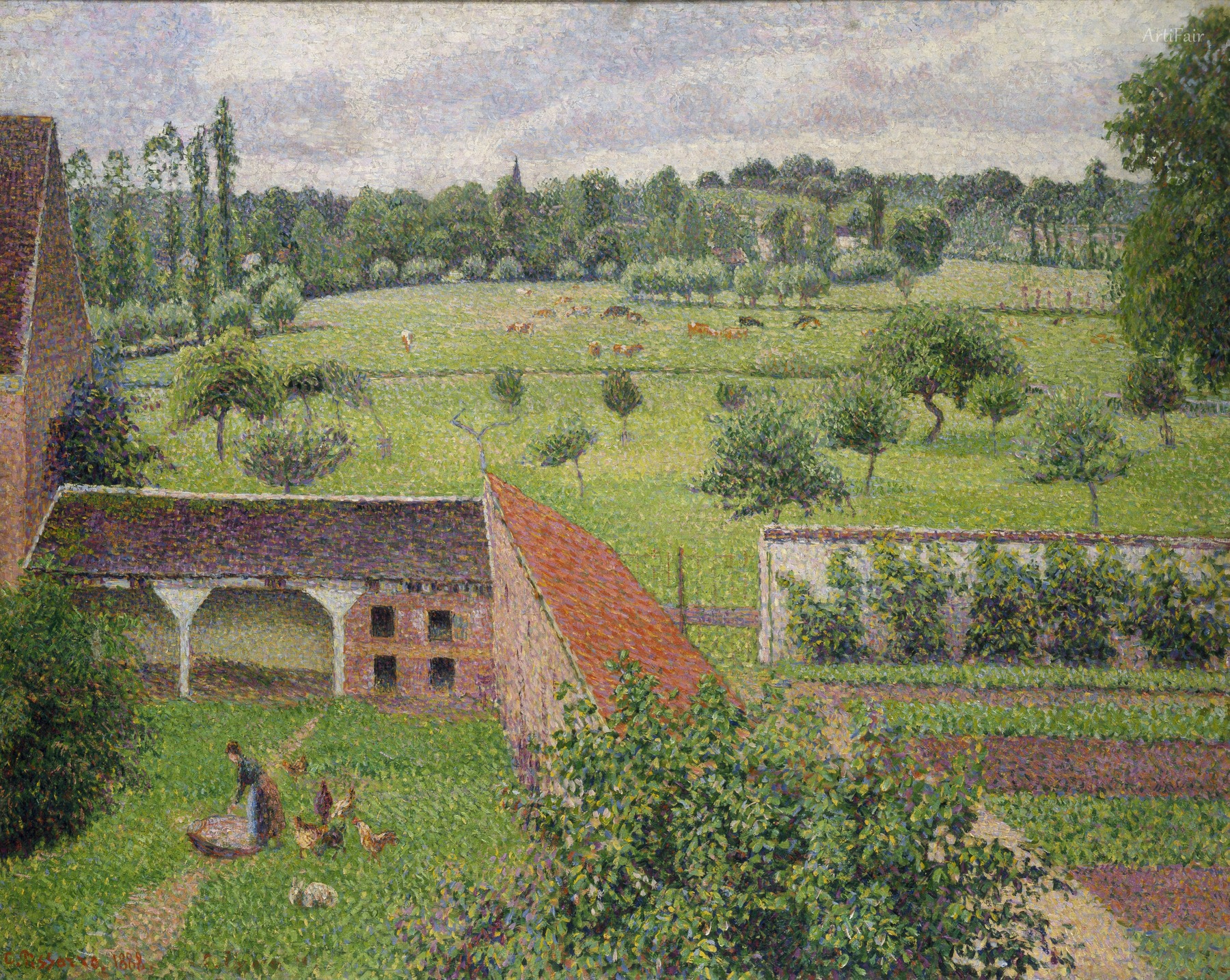
Art Appreciation
This painting captures a serene rural view through a window, revealing a lush, expansive countryside that stretches into the horizon. The scene is composed with a delicate balance of architectural elements in the foreground—a red-tiled roof, a barn, and a walled garden—intertwined with the natural greenery of bushes, trees, and open fields. The artist employs a pointillist technique, using small, distinct dots of color that shimmer and blend when viewed from a distance, giving the landscape a vibrant, almost tactile quality. The color palette is dominated by soothing greens and earthy tones, punctuated by soft blues and grays in the cloudy sky, evoking a calm, contemplative mood.
The composition draws the viewer’s eye from the intimate details of the garden and figures in the foreground to the expansive pastoral scene beyond, where cows graze peacefully. This layering creates a sense of depth and invites one to linger over each section of the canvas, feeling the quiet rhythm of rural life. Painted in 1888 during the height of Impressionism's evolution into Neo-Impressionism, the work reflects a pivotal moment in art history—where light, color, and modern technique combine to celebrate everyday beauty. Emotionally, it exudes tranquility and a gentle appreciation for nature’s quiet moments, making it a timeless window into a peaceful, pastoral world.